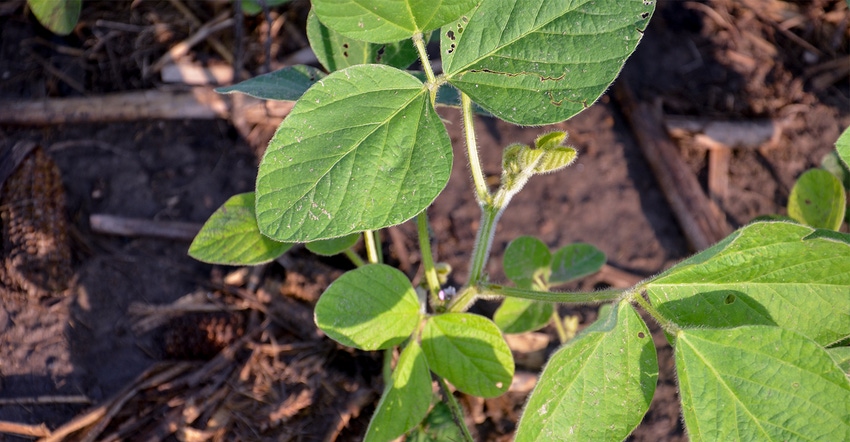
I noticed chewing on the first soybean leaves that emerged last spring. The next set of leaves didn’t have it. Was that from bean leaf beetles? I thought I planted seed treated with insecticide in that field. Did that early feeding affect yields at all? Is there really any reason to plant soybeans treated with an insecticide?
The Indiana certified crop adviser panel answering this question includes Betsy Bower, agronomist, Ceres Solutions, Terre Haute; Jamie Bultemeier, agronomist and corporate sales manager for A&L Great Lakes Labs, Fort Wayne; and Steve Gauck, sales agronomist, Beck’s, Greensburg.
Bower: Early feeding on soybeans is likely from bean leaf beetles. They overwinter in Indiana. The first emerging bean leaf beetles will be attracted to early-planted beans. For the insecticide to work, the insect must ingest some of the leaf tissue. So insect holes could easily be found on the first set of leaves but not on the second set of leaves, yet the insecticide did its job. The early feeding did not likely affect soybean yield.
Our local research in the southern part of Indiana indicated that one in five years, the insecticide application paid for itself. The soybeans looked healthier and likely did canopy a slight bit quicker, but the early-season insect protection wasn’t always needed. Local conditions vary around the state. Consult your local crops professional for your area.
Bultemeier: It’s possible this feeding is from bean leaf beetles. Scout regularly to identify the pest while damage occurs. Seed treatment-based insecticides are systemic in the plant. Beetles must feed on the plant to ingest the pesticide. Since beetles didn’t feed on newly developed leaves, it suggests that feeding was stopped. Seed treatment-based insecticides are very effective in preventing bean leaf beetles from reaching a point at which yield is impacted. Light feeding has little or no impact on yield. However, if feeding continues and the growing point is destroyed or the cotyledons are consumed before trifoliate leaves emerge, significant yield reductions will occur.
Gauck: At this time of the year, it would be hard to determine what insect was causing the feeding last spring. You need to catch the insect in the act so you can identify it at that time. But in many cases we did see bean leaf beetles in several fields last spring. We also saw slugs feeding on lower leaves. As the soybeans grow, we will not see slugs feeding up the plant. Bean leaf beetles can move up the plant and feed on leaves higher in the canopy.
The insecticides used as seed treatments are normally systemic and move throughout the plant to provide protection. Insects need to ingest the leaves to get the insecticide. So small amounts of feeding aren’t uncommon. Slugs, though, are not controlled with insecticides. The early feeding by bean leaf beetles did not affect yields, as the soybean plant had time to recover. Yield is determined later in the season.
Slugs were a different story. If they destroyed enough seedlings, they may have thinned stands enough to make it necessary to replant. Even if the stand was good enough to keep, plant population was typically reduced. Weather conditions allowed slugs to stay around much longer than usual in many areas in 2017.
About the Author(s)
You May Also Like




